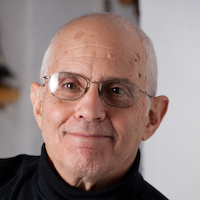Restoring Meditation to the Yogic Repertoire.
The other night I was chatting with a yoga teacher, who said that one of her New Years resolutions was to meditate every day. “It’s already March,” I pointed out. She laughed and said that gives her ten months to get it together.
I’ve always found it odd that so many dedicated yoga practitioners don’t have a regular meditation practice. More puzzling is that yoga teachers who can practically recite the Yoga Sutras by heart don’t sit regularly either, and they know that Patanjali gives hardly any attention to asanas but has a whole lot to say about the mind. In fact, the whole text can be seen as an elaboration of the second verse, in which the sage defines yoga as “the cessation of the fluctuations of the mind.” (I prefer “cessation” to “suppression” and other terms that suggest force.) You would think that hundreds of scientific studies on meditation, not to mention the surge in yogic literacy, would have made meditating as common as stopping at Starbucks for a caffeine fix. Instead, a great many yogis are like the teacher with the New Years resolution: they know it would be a good idea, but they don’t get around to it.
Why don’t they? There are many reasons, of course, perhaps chief among them the rebranding of yoga as a physical fitness regimen and the almost exclusive identification of yoga with asana. But that doesn’t explain why people who know better neglect Patanjali’s dharana, dhyana, samadhi denouement.
The most frequent excuse I hear is lack of time. But that’s usually from ordinary folks who are busy ticking off items on their long to-do lists, not yogis who know it’s wise to invest in personal wellness and who have no problem taking the time for asanas. I think one of the obstacles is a subtle two-step: they don’t fully appreciate the profound value of meditation because they haven’t done it regularly enough or long enough, and they haven’t done it regularly or long because they haven’t really learned how to meditate.
I can’t count the number of times I’ve heard someone say, “Meditation doesn’t work for me,” or, “I’m not good at it.” When I ask if they’ve ever been taught a specific form of meditation by a qualified instructor, the answer is usually no. For some reason, people think they ought to be able to just sit down and do it on their own. Well, you can pluck some notes on a piano too, but if you want to make music you might want to get some lessons. Some would-be meditators pick up haphazard directions in a self-help magazine, or try to remember a guided relaxation from a stress management seminar, only to find the experience unsatisfying. Why? Because, having heard that meditation quiets the mind, they try very hard to achieve that result, and the effort leads to strain. Which is, of course, the exact opposite of meditation. As a result, we find situations like this: someone decides to meditate to reduce tension; but she hasn’t been properly instructed, so she gets anxious about her meditation; she tries hard to get it right; it becomes an unpleasant chore; she concludes it doesn’t work for her and gives it up.
Yoga practitioners understand the value of expert instruction. That’s why they take classes instead of making up asanas on their own. Asanas are taught with rigor and precision. But, for some reason, meditation has been treated in a much more cavalier fashion. It was not always that way. Gurus who emphasized sitting practices provided expert guidance. Experiences and nuances were discussed. The differences between one form of meditation and another were understood. To cite one historically important example, I was one of thousands of people who were trained to teach Transcendental Meditation by Maharishi Mahesh Yogi back in the seventies. We spent hours upon hours over a long stretch of time learning the ins and outs of the instruction and follow-up procedures before we were let loose to instruct students. Other teaching lineages had their own methods for training and certifying instructors. But the more popular and mainstream meditation became, the more the descriptions of it became careless and what passed as instruction became more and more indiscriminate.
This is something the yoga community needs to contemplate. If yoga really is what the sages said it is, and if modern practitioners want to enjoy the full range of the tradition’s extraordinary promise, we need to treat meditation with the same respect and rigor that we afford asanas and pranayama. Then, yogis will find it easier to find time for the practice because they will experience it as easy and beneficial. Just as Gandhi did: one morning, facing a particularly challenging day, the Mahatma said, “I have so much to accomplish today that I must meditate for two hours instead of one.”
Two other Phil Goldberg articles:
True or False? Physical Yoga Has Influenced America More than Spiritual Yoga.
How Yoga Has Transformed American Spirituality: An Interview with Phil Goldberg, “American Veda”.

 Share on bsky
Share on bsky






Read 68 comments and reply